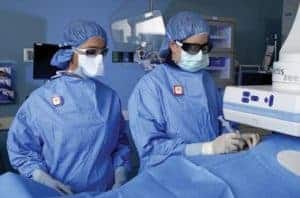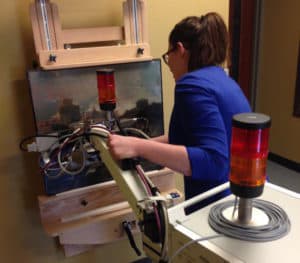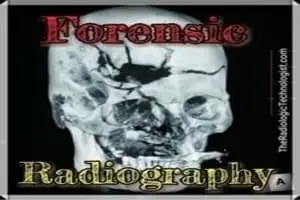Forensic Radiology – Come to the Dark Side
Do you think a career in medical imaging sounds boring? Well, guess again. It is common for hospital imaging departments to get requests to image the deceased. Gene Turley, our County Coroner, was a guest speaker at our annual state radiology society conference this year. He shared many PowerPoint slides showing the types of patients who undergo imaging examinations post-mortem.
That is the topic of this article…
what exactly is forensic radiography?
Answer: Conducting examinations that use harmful radiation to gather and analyze forensic evidence constitutes forensic radiography, an academic and scientific discipline, per the American Society of Radiologic Technologists.
To watch the video, click below:
Radiography is commonly used in collecting forensic evidence and is especially useful for confirming the identity of living and deceased subjects. It can be used for identifying pre-existing skeletal trauma, assisting in the determination and/or confirmation of the cause of death, and locating hidden foreign bodies. Some types of foreign bodies include bullet fragments, fragments of explosives, and packages of illegal substances.
This is why it is important for rad techs to understand the appropriate forensic imaging protocols for each situation and the legal and ethical issues involved. During my career, I have seen a variety of post-mortem examinations. Bicycle riders hit by cars, minors in abuse cases and other cases that can’t be unseen. It is not a pleasant part of the job but it is fulfilling in its own way.
Moreover, as rad techs, we get to solve the puzzle. We are the digital sleuth on the case. We can radiograph through the body and see the broken bones. The county coroner relies on radiographers to provide clues that cannot be seen elsewhere. Radiographers provide digital evidence that can help to solve cases. Digital evidence includes all facets of crime where evidence may be found in a digital form. It includes forensic imaging, audio, video analysis, and computer systems analysis of computer files and other digital data.
Who can be involved in forensic radiography?
There are three professions identified by the ASRT that can perform this necessary task:
- The traditional licensed ARRT radiographer or x-ray tech.
- A limited license radiographer or LXMO (limited x-ray machine operator), also licensed by the ARRT.
- A forensic assistant (usually an assistant to a forensic pathologist, medical examiner, or forensic laboratories, including morgue assistants, laboratory clerks, and pathologists).
In every hospital I have worked over the past 16 years, these examinations occur in our main imaging department. The deceased are brought in on a gurney and usually sealed inside what is commonly called a “body bag.” The bodies are often laid on the imaging table and imaged without opening the bag. However, there are times when only specific body parts need to be imaged… including body parts that are no longer attached. In those cases, no shroud covers the object being imaged. More often than not, it occurs on the evening or night shift. These are the technologists who bare the brunt of this emotionally taxing examination.
Sensitivity of the County Officials
The county officials are sensitive to the fact that hospitals have more of the general public walking around during the day. Out of respect for decorum, they bring the deceased for imaging after normal hours when possible. Forensic imaging can occur in both general radiography or computed tomography. The determination lies at the request of the coroner. Sometimes it requires an entire CT scan of the body. But the day shift techs do sometimes get the same requests. It is completely random and part of the imaging technologist’s job to perform this exam. There is no more qualified person, in my opinion, to perform this exam than the licensed radiographer.
In the United States, there’s a good chance that a forensic pathologist will still cut into these corpses in search of clues about the cause of death. But technology advances mean that there are other options. Scanning the deceased with CT is commonly done in Europe, Australia, and Japan. It is slow to take hold in the United States, though a few Cheif Medical Examiner offices are leading the charge, incorporating imaging other than radiographs in their offices.
Forensic radiographers are not depicted on the tv shows…but they should be.
The forensic sciences enjoy great visibility and respect among the public today. Popular television shows depict the crime laboratory as an important and exciting endeavor. Moreover, young people study forensic science in college in unprecedented numbers. In particular, DNA analysis has revolutionized the ability of law enforcement to identify criminals and protect the innocent from wrongful prosecution, according to the National Criminal Justice Reference Service.
Forensic disciplines span a large range, including general toxicology, firearms/tool marks, questioned documents, trace evidence, controlled substances, biological/serological screening, fire debris/arson analysis, impression evidence (e.g., fingerprints, shoe/tire prints), blood pattern analysis, crime scene investigation, medicolegal death investigation, and digital evidence.
It should be noted that not all forensic services are performed in what is thought of as a traditional crime laboratory. Forensic services in the disciplines of digital evidence, latent prints, questioned documents, and crime scene investigation may also be provided at a site outside of the traditional crime laboratory setting by a unit composed of sworn law enforcement personnel who may or may not have scientific training.
Ultimately, they seek to solve the Cause and Manner of Death.
The Cause of Death is the determining factor that brings about the Manner of Death. COD is determined through a medicolegal investigation by the coroner. There are five Manners of Death:
- Natural – myocardial infarction, organ failure, Alzheimer’s, etc.
- Homicide – a death that results from an accident or injury when another person intentionally caused the injury to the deceased or a person acts in such willful and wanton disregard for life that his or her actions are likely to cause death.
- Suicide – a death resulting from the intent by the deceased to terminate his own life by any means.
- Accidental – a death resulting from an accident or injury not intentionally caused by the decedent or by another.
- Undetermined – if the evidence as to the manner of death is unclear.
What kind of cases require forensic radiography?
According to an ASRT forensic radiography survey completed in 2008 (only available to ASRT members), the following cases require radiographic imaging:
- Homicides
- suicides
- decomposed bodies
- infant deaths
- penetrating traumas
- burn victims and
- unidentified bodies

Although they are used for various purposes, skeletal surveys are commonly completed on children with suspected child abuse (living or deceased.) This survey is a systematically performed series of radiographic images encompassing the entire skeleton or those anatomic regions appropriate for the clinical indications. Moreover, it aims to identify focal and diffuse abnormalities of the skeleton. This includes acute or healing fractures, bone lesions, evidence of metabolic bone disease or characteristics of skeletal dysplasia. It is also used to differentiate them from developmental changes and other anatomic variants that may occur in infants and children. (American College of Radiology)
A licensed radiologic technologist will have training and experience in performing radiographic examinations on infants and children. In particular, the technologist is trained to be familiar with positioning and patient restraint. A rad tech is also trained in the measures to lessen the radiation exposure to every patient. We follow a culture of ALARA which means we keep the radiation levels As Low As Reasonably Achievable to obtain a diagnostic image. The technologist should know the unique circumstances created when caretakers, guardians, and child protective service representatives bring children with suspected abuse to the radiology department.
The case for a credentialed radiography program
There is no individual forensic radiographer career whose only job is post mortem x-rays. it is incorporated into the standard job duties of every radiographer, of which they are completely capable. A credentialed, accredited radiography school reviews medical and legal issues surrounding the radiology world. They properly prepare every student for many liability issues and devote an entire class to it. Coupled with the positioning classes, radiation physics, radiation biology and a slew of other basic radiography classes, the graduate of a proper program becomes a vital part of yet another segment of society: the forensic radiographer.
Revealing Counterfeit Art

A use of radiography in criminal investigations is on valuable paintings. Art historians can use radiographs to detect whether or not a picture has been painted over an existing piece. Art forgers know that you cannot take a fresh canvas and attempt to paint an ancient image on it. You would need an ancient canvas to start with. That is why they will find less valuable but old painting to paint over the original image. A newer canvas could be debunked with a common microscope and the age would be revealed. It is common throughout history for “starving artists” could save money by painting over other people’s paintings.
Radiography as a Medicolegal Investigative Tool
- Fingerprints: Specific imaging techniques using radiographs can uncover latent fingerprints from difficult surfaces such as plastic, biological material, and colored or printed paper.
- Documents: Radiographs can reveal surface details in the paper as well as indentations, obliterations, changes, and watermarks.
- Serial Numbers: Concealed or altered serial numbers may be visualized in radiographs as well as identifying markings hidden inside the seams of clothing.
- Bomb Detection: X-ray images provide a closer look at the explosive devices, including the battery and wiring.
Additional Information: If you are curious about the career of radiography, I have written some articles on various topics:

